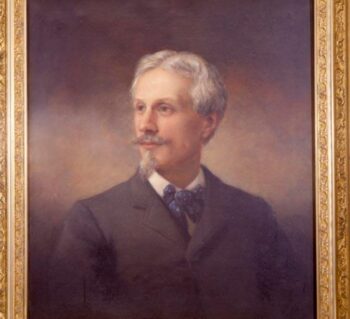
Black Troops at New Market
Did you know that when fleeing Confederates set fire to Richmond’s warehouse district and evacuated the capital in 1865, the U.S. Colored Troops were some of the first Union soldiers to arrive?
By Valentine Museum Staff
More than 180,000 Black troops served in the Civil War—comprising 10% of the Union’s forces. In and around Richmond, Black Union soldiers distinguished themselves in battle and service. They fought for what white Americans received at birth: the right to be called Americans.
In September of 1864, General Ulysses S. Grant sent Major General Benjamin F. Butler’s Army of the James to attack Confederate defenses east of Richmond. If successful, the campaign would make the capture of the Confederate capital possible. Of the 20,000 Union troops under Butler’s command, 3,000 were U.S. Colored Troops (USCT).

President Lincoln had authorized the use of Black soldiers nearly two years before. But, despite many acts of heroism in previous battles, white commanders remained skeptical of their capabilities. The Union did not grant Black troops commanding roles or commissions—as such, they could not give orders. Thus, USCT officers were always white. General Butler, however, believed that Black troops could fight just as well as whites. And he wanted to prove it, so he ordered that a USCT division lead one of the battles. On the morning of September 29, 1864, the Black troops—some of them native Virginians—charged the Confederate earthworks at New Market Heights, just eleven miles outside of Richmond. The fighting was brutal. And though the division suffered 800 casualties in just one hour, their endurance and bravery compelled them through the enemy line to victory.
Butler had been more than right. Given the opportunity to prove their patriotism, heroism and skill, the USCTs did not disappoint. In fact, several of them did take on commanding positions during the battle after their white officers had been killed. Their performance amidst the chaos of the Battle of New Market Heights impressed the Union superior officers, who awarded fourteen Medals of Honor to the USCTs. Among the recipients were these native Virginians:
- First Sergeant Powhatan Beaty, born in Richmond, who “Took command of his company, all the officers having been killed or wounded, and gallantly led it.”
- Private James Gardiner, from Gloucester, who “Rushed in advance of his brigade, shot a rebel officer who was on the parapet rallying his men, and then ran him through with his bayonet.”
- Corporal Miles James, from the Virginia Beach area, who “Having had his arm mutilated, making immediate amputation necessary, he loaded and discharged his piece with one hand and urged his men forward; this within 30 yards of the enemy’s works.”
- Private Charles Veal, from Portsmouth, who “Seized the national colors, after 2 color bearers had been shot down close to the enemy’s works, and bore them through the remainder of the battle.”
- 1st Sergeant Edward Ratcliff, from Yorktown, who “Commanded and gallantly led his company after the commanding officer had been killed; was the first enlisted man to enter the enemy’s works.”

Only sixteen Medals of Honor were awarded to Black troops during the entirety of the Civil War. Of those sixteen, fourteen of those medals were awarded to the USCTs at New Market Heights.
The Black troops who so bravely fought to penetrate Richmond’s defenses were subsequently garrisoned at nearby Fort Harrison, also captured during Butler’s campaign. The fort, now a unit of Richmond National Battlefield Park, lay just eight miles from Richmond.
Need to cite this?
| Authors | Valentine Museum Staff |
|---|---|
| Work Title | Black Troops at New Market |
| Website | https://thevalentine.org |
| Published | November 12, 2020 |
| Updated | May 28, 2024 |
| Copyright | © 2024 The Valentine Museum |


